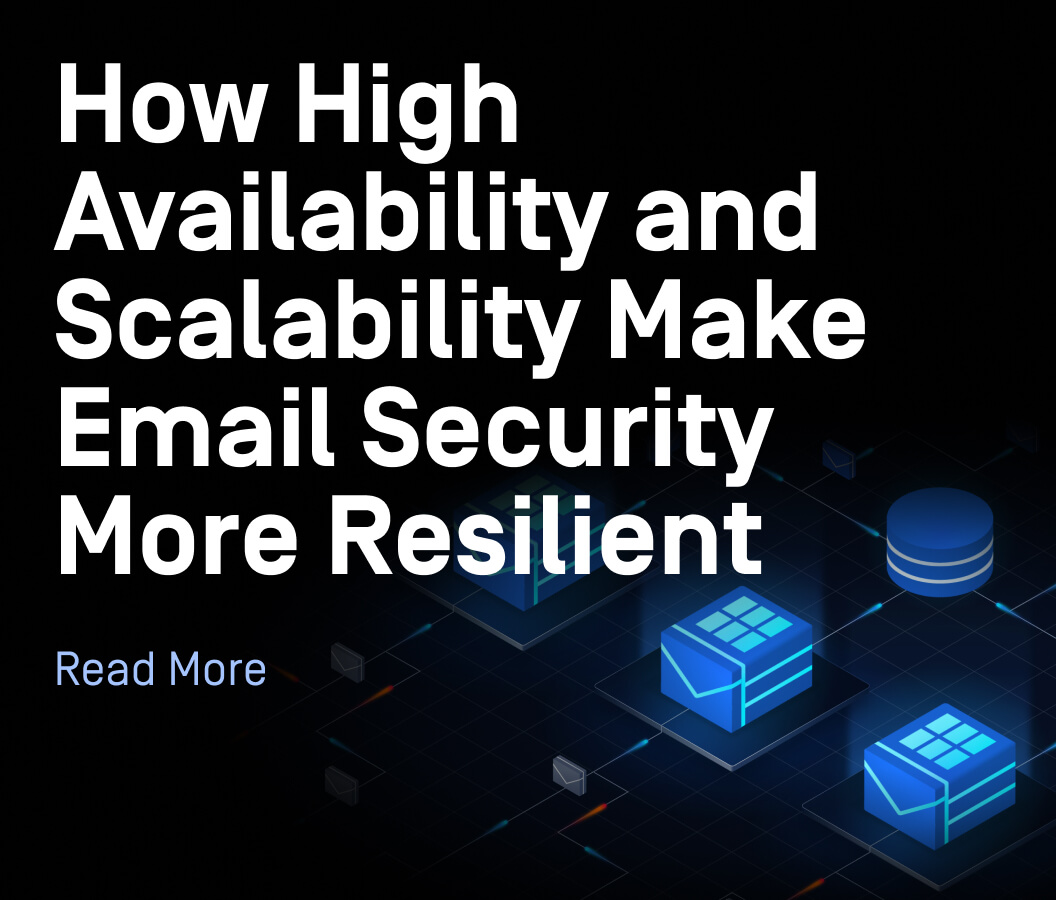Seamless communication is a critical element in every organization, and malicious actors know that. Exploiting employees’ needs to communicate, they are increasingly targeting emails with advanced threats such as ransomware or malware.
Unsuspecting users may trigger a kill chain that could cost millions (The Emotet malware, spread mostly through email attachments, cost an estimated $1 million per incident in damages at its peak).
In this article, we will cover email security best practices to help protect your organization from advanced email security threats. By implementing these security measures, you can significantly reduce the risk of becoming a victim of cyberattacks.
Table of Contents
- Introduction to Email Security
- Why Securing Your Email is Important
- Common Email Threats
- Five Best Practices for Everyday Email Security
- Eight Email Security Best Practices for Organizations
Introduction to Email Security
Email security involves preventing email-borne threats and protecting sensitive information from leaks through emails. It includes measures to detect and sanitize threats found within an email, both in the body and in attachments, as well as methods to identify and redact sensitive data.
In addition to technological measures, email security best practices also encompass awareness training. However, not every type of user can be expected to be a security expert that will do what’s necessary to stay vigilant against email threats, so relying on user awareness alone is risky.
Why Securing Your Email is Important
Emails Contain Sensitive Information
Emails are an indispensable mode of communication in the modern world, and this has made them fertile ground for malicious actors seeking to exploit sensitive information. Sensitive information can include personal identification information, trade secrets, business secrets, or customer information, all of which can cause massive financial and reputational damage if leaked.
Emails are Common Threat Vectors
Emails are still a top threat vector, according to the 2023 Data Breach Investigations Report by Verizon. Malicious actors use phishing emails to lure users into certain actions, including clicking on harmless URLs, downloading infected attachments and giving away their credentials. The costs of these actions are catastrophic. In 2022, the average cost of data breaches reached $4.35 million, according to the IBM Cost of a Data Breach 2022 Report. Phishing emails cost organizations USD 4.91 million on average in 2022. Effective email security measures are essential if you are looking to prevent these costs.
Staying Compliant with Regulatory Requirements
Implementing strong email security policies is also essential for regulatory compliance. Many industries are subject to strict data protection regulations, such as the General Data Protection Regulation (GDPR) in the European Union or the Health Insurance Portability and Accountability Act (HIPAA) in the United States. These regulations require businesses to take specific measures to ensure the security and privacy of the information they handle. By following email security best practices, organizations can stay compliant with these regulations and avoid costly fines, legal penalties, and reputational damage.
Common Email Threats

Phishing Attacks
Phishing attacks are one of the most commonly used threat vectors. Cybercriminals send fraudulent emails disguised as legitimate messages, attempting to trick recipients into revealing sensitive information or downloading attachments a malicious payload.
Phishing attacks can also be highly targeted, as in the case of spear phishing, also known as a business email compromise. In this case, the attacker researches and focuses on a specific individual or organization to access high-level sensitive information, or to send out even more convincing emails to their subordinates.

Spyware Attacks
Spyware is a form of malware that is specialized in gathering sensitive and classified information from business email accounts, which threat actors sell to third parties. Spyware is spread through infected email attachments or infected links. Users are then tricked into clicking on the links or downloading the attachments, deploying the spyware in the process.

Ransomware Attacks
Ransomware attacks involve the encryption of a victim's data by a malicious actor, who then demands a ransom in exchange for the decryption key. These types of attacks can spread through email, often using social engineering tactics to trick users into clicking on infected links or attachments. Once the victim unpacks the attachment or clicks on the link the ransomware loader can be quickly installed to launch the multi-stage attack.

Spoofing
Spoofing involves forging email headers to make it appear as if the email comes from a trusted source, making it more likely that the recipient will open the message and act upon its contents. Spoofing emails often includes a worm code that spreads them even further without the users being aware of it.
Advanced spoofing attacks may try and disguise the URLs within the email, making it even harder for users to stay vigilant. In these scenarios, a time-of-click URL reputation analysis is particularly useful, as it blocks the URLs and puts them through a reputation analysis before allowing users to connect. Users will be fully protected from malicious links in this case.
Five Best Practices for Everyday Email Security

1. Enable Two-Factor Authentication
Two-factor authentication (2FA) adds an additional layer of security by requiring a second form of verification (a code sent to your phone, for example) to access your email account. This makes it more difficult for attackers to gain unauthorized access even if they have your password.
2. Beware of Suspicious Links and Attachments
Always be cautious when clicking on links or opening attachments in emails, especially if they come from unfamiliar sources. Hover over links to check their destination before clicking and use antivirus software to scan attachments for malware.
3. Don’t Use Business Email Addresses for Personal Matters
Employees might be tempted to use business email addresses for personal matters, but this is as bad as inviting malicious actors to attack your mailbox. Business emails have different security settings that make them more robust than personal emails, and mixing up the two puts you within the crosshair of spearphishing schemes.
4. Configure Email Security Settings
Take the time to review and configure the security settings within your email client or service. Enable features such as spam filtering phishing protection, hash lookup, webhooks, and recipient look-ahead to help protect your account from threats.
5. Keep Your Software Up to Date
Cybercriminals often exploit known vulnerabilities in outdated software to gain access to your system. Regularly updating your operating system, email client, and antivirus software ensures you will have the latest security patches installed, preventing threats from exploited vulnerabilities.
Eight Email Security Best Practices for Organizations

1. Implement an Advanced Email Gateway
Using an advanced email gateway maximizes your overall email security posture, protecting organizations from sophisticated threats that have become more and more common. An advanced email gateway can even detect zero-day malware and prevent unknown threats, making sure that your mailbox is safe and secure all the time. It should also have anti-phishing and anti-spam with advanced heuristic filter capabilities as well, ensuring the highest detection rate as well as zero false positives.
2. Scan Incoming Emails
All incoming emails should be scanned by anti-malware engines with no exceptions to prevent hidden threats. However, scanning with just one anti-malware engine might not be enough, as the increasing number of different malware variants makes it even harder to detect threats.
Multiscanning is a technology that scans emails using multiple anti-malware engines at the same time for better detection rates, enabling it to effectively detect most email threats. Consider utilizing the advanced capabilities of Multiscanning to further enhance your email security.
3. Establish an Incident Response Plan
Though none of us want to be in this position, it is still important to have a clear incident response plan for handling security breaches. This plan should include communication protocols, steps to contain the breach, and procedures for recovery and reporting.
4. Remove Sensitive Information
Detecting and redacting sensitive information within an email is a core email security best practice. This data loss prevention step minimizes the risk of data leaks, which could land your organization in hot water. By removing sensitive information altogether, your organization will stay compliant with regulatory requirements.
5. Regularly Update and Patch Email Servers
For organizations managing their email servers, it is essential to keep the servers updated and patched with the latest security updates. This can help protect your organization's email infrastructure from known vulnerabilities and exploits. For unknown exploits, a more advanced technology such as Content Disarm and Reconstruction (Deep CDR) is required.
6. Train Employees on Cybersecurity Awareness
It's crucial to provide regular training to your employees on email security best practices. Educate them on how to identify and report phishing attempts, malware, and other threats. A well-informed workforce can significantly reduce the risk of a successful attack.
7. Create and Enforce Email Security Policies
Establish clear policies for your organization regarding the use of email and the handling of sensitive information. These policies should cover password requirements, encryption, acceptable use, and reporting procedures for suspected threats. Make sure to enforce these policies consistently to maintain a secure email environment and prevent data breaches.
8. Use Email Security Controls
Implementing multiple specialized email security solutions will put undue pressure on the IT team, as they have to maintain different solutions on the same network. By choosing a comprehensive integrated solution such as , your organization gains advanced email security capabilities at much lower total costs of ownership and less maintenance burden.
Conclusion
Email security is crucial for protecting your organization from various cyber threats. By following the email security best practices outlined in this article, you can significantly reduce the risk of falling victim to phishing attacks, malware infections, and other email-related threats.
Take your email security to the next level and prevent advanced threats and sophisticated attacks. OPSWAT MetaDefender Email Security offers reliability and advanced capabilities that are trusted by organizations around the world to keep their email secure. Talk to our experts for more information.
Frequently Asked Questions (FAQ)
Q: Can I rely solely on my email provider's security features to protect my business?
A: Relying solely on your email provider’s security features is not going to be enough. An email provider often implements only basic security features such as signature-based anti-malware scanning. Organizations, especially critical infrastructure facilities, need more advanced solutions to handle increasingly complex threats.
Q: What is the purpose of a phishing email?
A: A phishing email is an email intended to trick the receiver into certain actions, including giving away their sensitive information or downloading a malicious attachment. Phishing emails often carries an urgent tone, and their sender is often disguised as a familiar person to gain receivers’ trust.
Q: What is the difference between a spoofing email and a phishing email?
A: A spoofing email and a phishing email are two closely related concepts. They both share the same goal: To goad the receiver into divulging sensitive information or downloading malicious attachments. The difference between the two is simply in the method: A spoofing email is a phishing email which contains the spoofed links while phishing emails might not contain them. Phishing emails encompass spoofing emails.
Q: How can I identify a phishing email?
A: Some common signs of phishing emails include:
- Urgent or threatening language
- Requests for sensitive information, such as passwords or financial details
- Out-of-place requests from a familiar person
- Generic greetings, such as "Dear Customer"
- Misspellings or poor grammar
- Suspicious links or attachments
Always be cautious when opening emails from unfamiliar senders and verify the legitimacy of any requests for sensitive information. Even if the sender is a familiar person, take a minute to wonder if their request makes sense.
Q: What is two-factor authentication, and how does it help secure my email?
A: Two-factor authentication (2FA) is a security measure that requires a second form of verification, such as a code sent to your phone, to access your email account. This adds an extra layer of protection, making it more difficult for attackers to gain access even if they have your password.
Q: How often should I change my email password?
A: It is recommended to change your email password regularly, at least every three months. However, if you suspect that your account may have been compromised, you should change your password immediately.
Q: What steps should I take if I believe my email account has been compromised?
A: If you suspect your email account has been compromised, take the following steps:
1. Change your password: Choose a strong, unique password for your email account.
2. Enable two-factor authentication (2FA): Set up an extra layer of security by enabling 2FA for your email account.
3. Check for any unauthorized activity: Review email account settings and check for unfamiliar emails or suspicious activity.
4. Scan your computer and devices for malware: Run a comprehensive antivirus scan on your devices to ensure they are not infected.
5. Review connected accounts: Check if your compromised email account is linked to other online services and change the passwords for those accounts as well.
6. Contact your email contacts and notify them: Inform your email contacts about the possible compromise and advise them to be cautious.
7. Update security measures: Strengthen your online security by using unique passwords, regularly updating your software, and staying informed about the latest security practices.

